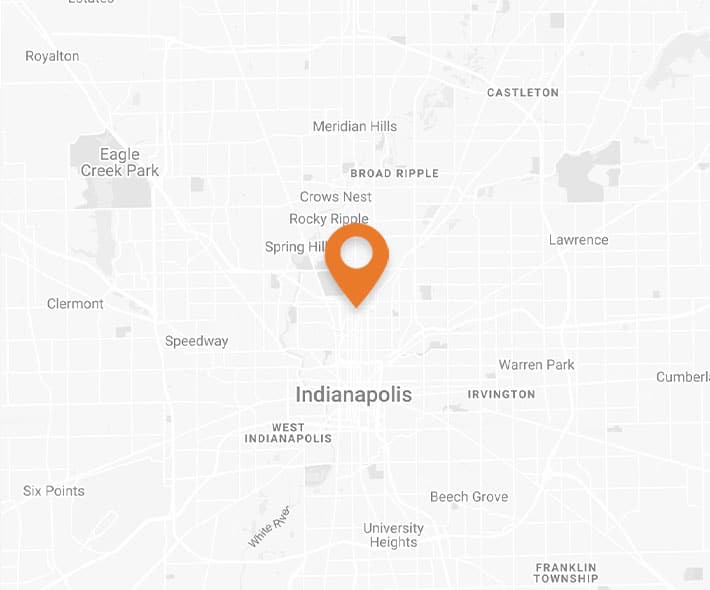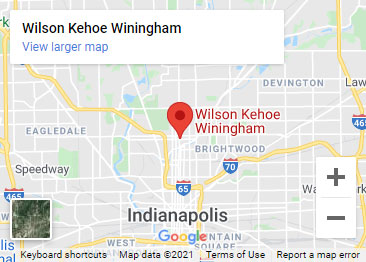Chain of Causation: Legal Definition and Examples
Updated April 1, 2024 | By Wilson Kehoe Winingham staff
Chain of causation is a legal term that links the elements of negligence together. The chain of causation is the complete link from the defendant’s negligent action (or inaction) to the victim’s injury.
For example, suppose a doctor examines a patient with a history of skin cancer. Despite having this risk factor documented in the patient’s file, the doctor fails to do a thorough examination. He, therefore, does not identify an irregular area of skin that warranted a closer look. Because of the doctor’s failure to diagnose, the patient does not get treatment for what turns out to be a recurrence of skin cancer. The patient seeks a second opinion several months later when the area becomes more noticeable. The cancer has progressed significantly, and now the patient will need a much more aggressive treatment and surgery. This chain of events, from the first doctor’s negligence to the patient’s aggressive cancer treatment, is a complete chain of causation.
What Is Negligence?
Negligence, as a legal term, is the failure to behave with the same or similar standards of conduct that a reasonable person would employ in a similar situation.
Negligence can be action or inaction. A negligent person acts outside a reasonable level of care or caution. If you are injured because of a person’s negligence, you may be able to hold them liable for damages.
Negligence may seem straightforward at the time of an incident or accident. For example, if a person runs a red light and crashes into a car, it may seem obvious the car crash is the driver’s fault. However, establishing negligence is never quite as simple, particularly when determining if a person acted out of a reasonable level of care. It’s possible that the brakes were installed incorrectly or there was black ice on the road. The liability becomes more complex. One of the ways to prove negligence is by establishing foreseeability.
Click the link to learn more about negligence’s meaning.
Foreseeability in Negligence
The doctrine of foreseeability is how predictable an injury or accident is. Foreseeability needs to be proven to hold a defendant liable. If the injury or accident was foreseeable, then the defense is at fault.
Foreseeability needs to be proven; the defendant needs to have foreseen or should have foreseen the general dangers of their action or inaction. A foreseeability test determines whether or not the defendant might have reasonably foreseen a specific accident and injury. The foreseeability test poses the question: Should the defendant have reasonably foreseen the consequences of their action or inaction?
Two answers can form from the question:
- Yes, the defendant should have reasonably foreseen the injuries and is therefore liable, or;
- No, the defendant should not have reasonably foreseen the injuries and is therefore not liable
Though these are two reasonably simple answers, foreseeability in negligence is often ambiguous.. Our experienced and knowledgeable attorneys at WKW will assist you to present and prove foreseeability, then liability
What Is Causation?
Causation is a legal term that means proof of negligence. In other words, a person cannot simply be negligent. Their negligence needs to have caused an injury. Causation is the relationship between the cause and effect of the defendant’s action(s) and the injuries the plaintiff sustains.
A personal injury case must establish causation to hold the negligent party liable. This is much easier said than done. It’s essential to consult an experienced personal injury attorney who understands the nuances of causation so that you can be compensated for your losses. Click the link to have an in-depth look at the legal definition of causation.
Causation is not always obvious, even if it seems so from your perspective. Talk to the personal injury attorneys at WKW right away if you have been hurt due to another’s negligent actions.
Elements of a Negligence Claim
There are four elements to a negligence claim, each of which needs to be proven to establish negligence.
- Duty of Care: acting with care and caution, the same way any reasonable person would act in a similar situation
- Breach of Duty: violating the duty of care through action or inaction; not acting in a reasonably in a particular situation
- Injury: another person or multiple people suffer injuries
- Proof that Negligence Caused Injury: demonstrating a direct link between breach of duty and injury; the breach of duty must have caused the injury and harm to others
Foreseeability is necessary to establish liability in negligence cases because it keeps the chain of causation unbroken.
What Is the Chain of Causation?
The chain of causation is the events that make up causes and effects. The chain of causation is the links that bind cause and effect together. An action causes an effect; the chain is the unbroken link between action and effect.
Think of every negligence case as a chain. Each link is a single element of negligence. The links must be held together, or the negligence claim is broken. You cannot prove negligence if one link is broken or missing.
Let’s look at a simple, everyday example: When you turn a door handle and pull, a door will open. The open door is dependent on you turning the doorknob and pulling. The chain of causation examples goes as follows:
- You turn the doorknob (cause)
- You pull (cause)
- The door opens (effect)
There is no interference, and the cause and effect are straightforward. But what happens when there is an interruption in the chain of causation? In that case, let’s take a look at the same example:
- You turn the doorknob (cause)
- You pull (cause)
- A big gust of wind blows towards you (interruption)
- The door opens (effect)
The wind interferes with the chain of causation. The cause of the effect is now muddled. The same principle applies in litigation cases.
The links in the chain of causation must be proven elements of negligence to show that the defendant’s actions caused the accident and injuries. Breaking the chain of causation means there is a disruption to one of the elements of negligence. If the chain is interrupted, the defendant is not held liable.
Keeping the chain of causation unbroken depends on foreseeability, which is why foreseeability in negligence is so crucial to place liability.
Chain of Causation Examples
The elements of negligence remain the same even though every personal injury lawsuit is different. Every element in the causation chain must be proven with reasonable foreseeability, regardless of the damage done. Let’s consider an example of the chain of causation negligence in a slip and fall accident.
Say you are out grocery shopping and break your arm when you slip on a wet floor. Let’s walk through this scenario’s chain of causation elements.
Duty of Care
A grocery store owner or manager has the duty to keep their shoppers and employees safe while on the grocery store property. The owner or manager needs to act with the same care that all other grocery store owners or managers do to ensure safety, including having the correct safety signage.
Breach of Duty
When an employee mops the floors, they forget to place a wet floor sign on the tile, making the slippery floor hardly noticeable to shoppers.
Injury
You slip, taking a hard fall onto the tile floor. When you land on your arm, you immediately feel a searing pain. You get rushed to the hospital in an ambulance and find out what you assumed to be true: your arm is broken.
Proof that Negligence Caused Injury
Your injury attorney proves that because the employee did not mark the wet floor, you slipped, causing your broken arm.
This is just an example; all personal injury cases are different and not as straightforward as this outline. Chain of causation law is highly complex. Vicarious liability for instance, can be applied if the employee and not the owner failed to put up the sign. Maybe the ambulance driver got into a car accident, so it’s more difficult to determine what caused your broken arm. Maybe it was winter, and the wet spot was from ice tracked in instead of an employee’s task to clean the floor. The possibilities are endless, and each factor contributes to elements in the chain of causation.
Making a solid argument takes the skill and knowledge of an experienced personal injury attorney well-versed in chain of causation law. Call us today if you have more questions about chain of causation.
Contact A Personal Injury Attorney at WKW
The experienced personal injury attorneys at WKW have over 100 years of combined experience, with over 4,000 cases successfully resolved for our clients. We can help you understand chain of causation negligence and build your personal injury case today! Call us at 317.218.9643 or fill out an online form for a free consultation.
Check out our legal dictionary blog to learn about legal terms for your case.
Contact Us
Let WKW put our experience to work for you. Contact us for your free case evaluation.
Or, call us today at (317) 920-6400


